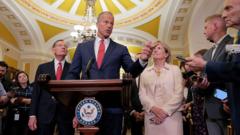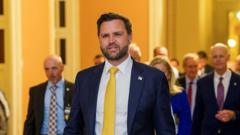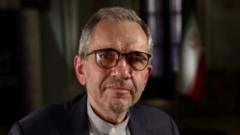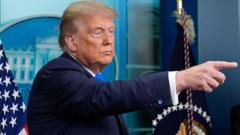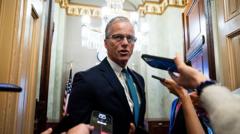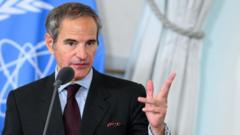The push for lower drug prices in the US has culminated in President Trump's recent executive order, which claims to drastically cut costs comparable to those seen in other countries. Trump asserts that pharmaceutical companies will be required to adjust their pricing to reflect lower international rates, boasting potential reductions of 30% to 80%. However, experts remain doubtful about these ambitious projections, particularly given the complexities of the US healthcare system marked by private insurance and public programs like Medicare and Medicaid, which have long contributed to inflated costs.
Trump's Drug Pricing Executive Order: An In-Depth Look at Its Implications

Trump's Drug Pricing Executive Order: An In-Depth Look at Its Implications
US President Donald Trump has enacted an executive order aimed at drastically reducing prescription drug prices, but the potential outcomes raise numerous questions.
The directive comes amid escalating dissatisfaction concerning drug prices in the US and the ongoing rivalry between political parties over solutions. Both Trump and his health officials have pointed fingers at pharmaceutical lobbying as a barrier to meaningful reforms. Trump's order also seeks to enhance transparency by advocating for direct sales from drug companies to consumers and suggesting the importation of cheaper drugs, though safety concerns and legalities pose challenges.
Further complicating matters is the proposed "Most Favoured Nation" status, which would compel pharmaceutical firms to align US prices with the lowest rates offered abroad. The unclear enforcement mechanisms behind this principle raise questions about its real-world application. Stock market reactions reflect skepticism about the executive order’s efficacy, hinting at investor apprehension towards its long-term impact on drug companies.
Industry representatives have voiced strong opposition, arguing that the initiative could stifle pharmaceutical innovation and worsen drug supply issues while potentially leading to legal entanglements. Experts predict that without the president's sustained commitment, any meaningful changes in drug pricing remain uncertain.
In conclusion, while Trump's executive order signals an initiative towards reducing prescription drug costs, significant hurdles and market uncertainties imply that substantial benefits for American consumers may not materialize in the foreseeable future.
The situation continues to evolve, and continued scrutiny will be necessary to assess the effectiveness and ramifications of this policy step.
Further complicating matters is the proposed "Most Favoured Nation" status, which would compel pharmaceutical firms to align US prices with the lowest rates offered abroad. The unclear enforcement mechanisms behind this principle raise questions about its real-world application. Stock market reactions reflect skepticism about the executive order’s efficacy, hinting at investor apprehension towards its long-term impact on drug companies.
Industry representatives have voiced strong opposition, arguing that the initiative could stifle pharmaceutical innovation and worsen drug supply issues while potentially leading to legal entanglements. Experts predict that without the president's sustained commitment, any meaningful changes in drug pricing remain uncertain.
In conclusion, while Trump's executive order signals an initiative towards reducing prescription drug costs, significant hurdles and market uncertainties imply that substantial benefits for American consumers may not materialize in the foreseeable future.
The situation continues to evolve, and continued scrutiny will be necessary to assess the effectiveness and ramifications of this policy step.

